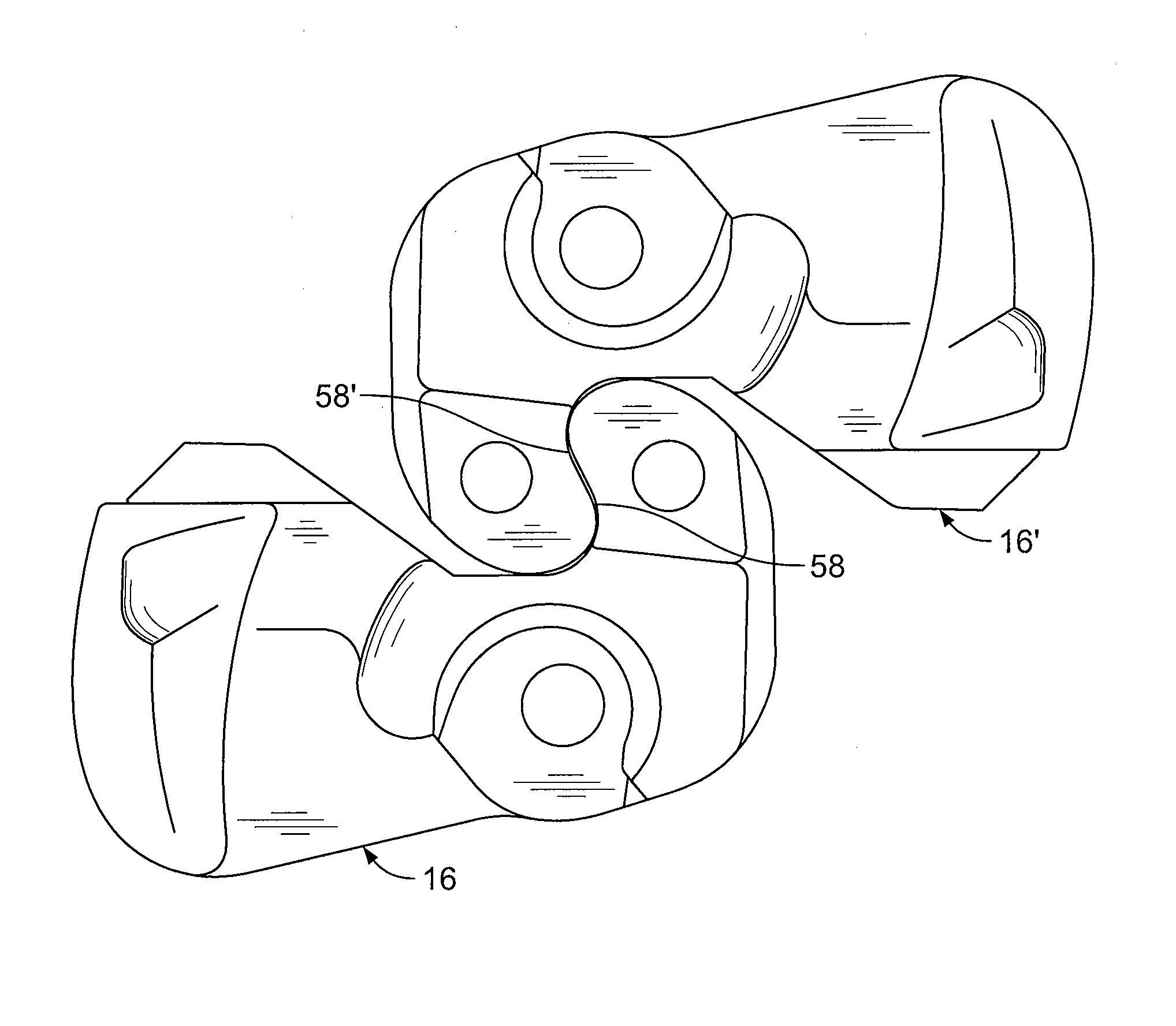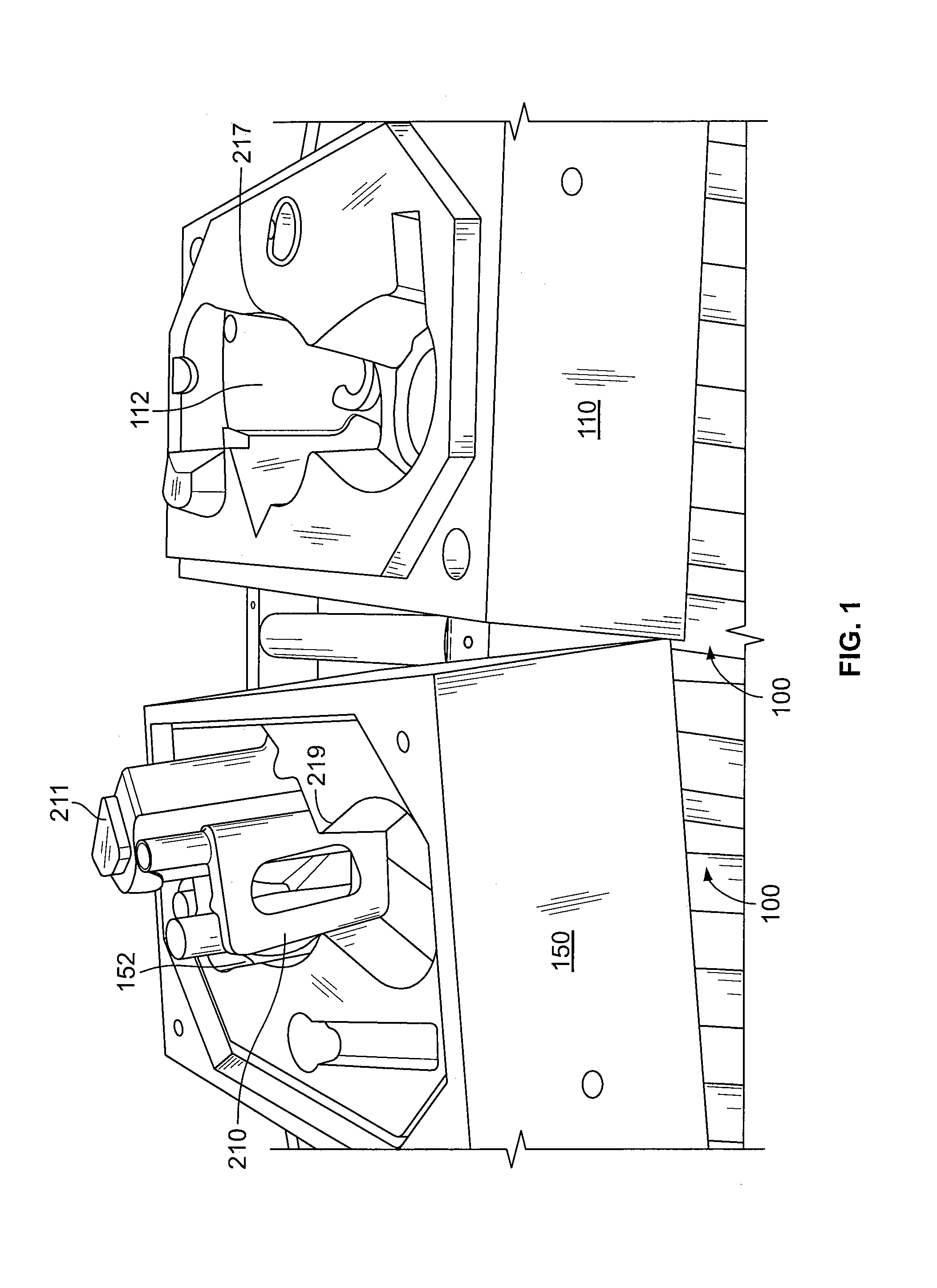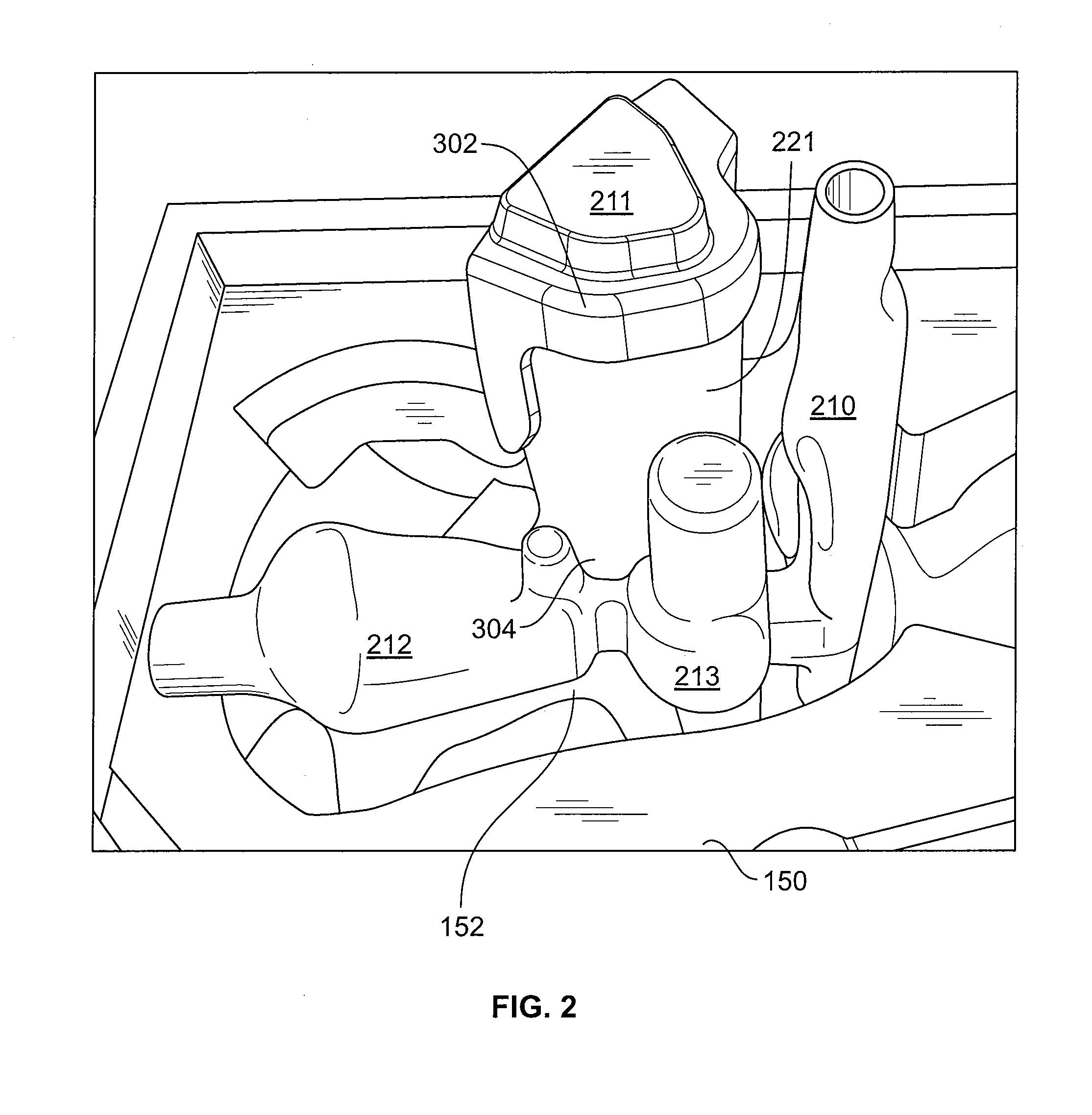Knuckle Formed Through The Use Of Improved External and Internal Sand Cores and Method of Manufacture
a technology of external and internal sand cores and manufacturing methods, which is applied in the field of rail road couplers, can solve the problems of increased failure risk during use of the knuckle, poor coupling/uncoupling performance of the coupler, and insufficient knuckle thickness, etc., and achieve the effect of reducing micro-shrinkag
- Summary
- Abstract
- Description
- Claims
- Application Information
AI Technical Summary
Benefits of technology
Problems solved by technology
Method used
Image
Examples
Embodiment Construction
[0029]In some cases, well known structures, materials, or operations are not shown or described in detail. Furthermore, the described features, structures, or characteristics may be combined in any suitable manner in one or more embodiments. It will also be readily understood that the components of the embodiments as generally described and illustrated in the Figures herein could be arranged and designed in a wide variety of different configurations.
[0030]The disclosure herein describes improved cores to improve the strength, fatigue life, and operational performance of the coupler knuckle. Referring to FIGS. 1 and 2, a railroad coupler knuckle is made from a mold 100 that includes cope and drag sections 110, 150, respectively. The cope and drag sections each include cavities 112, 152, respectively, into which a molten metal or alloy is poured to cast the coupler knuckle. Disposed within the drag section cavity 152 is a plurality of cores. This exemplary embodiment includes a finger...
PUM
| Property | Measurement | Unit |
|---|---|---|
| Density | aaaaa | aaaaa |
| Area | aaaaa | aaaaa |
| Metallic bond | aaaaa | aaaaa |
Abstract
Description
Claims
Application Information
 Login to View More
Login to View More - R&D
- Intellectual Property
- Life Sciences
- Materials
- Tech Scout
- Unparalleled Data Quality
- Higher Quality Content
- 60% Fewer Hallucinations
Browse by: Latest US Patents, China's latest patents, Technical Efficacy Thesaurus, Application Domain, Technology Topic, Popular Technical Reports.
© 2025 PatSnap. All rights reserved.Legal|Privacy policy|Modern Slavery Act Transparency Statement|Sitemap|About US| Contact US: help@patsnap.com



